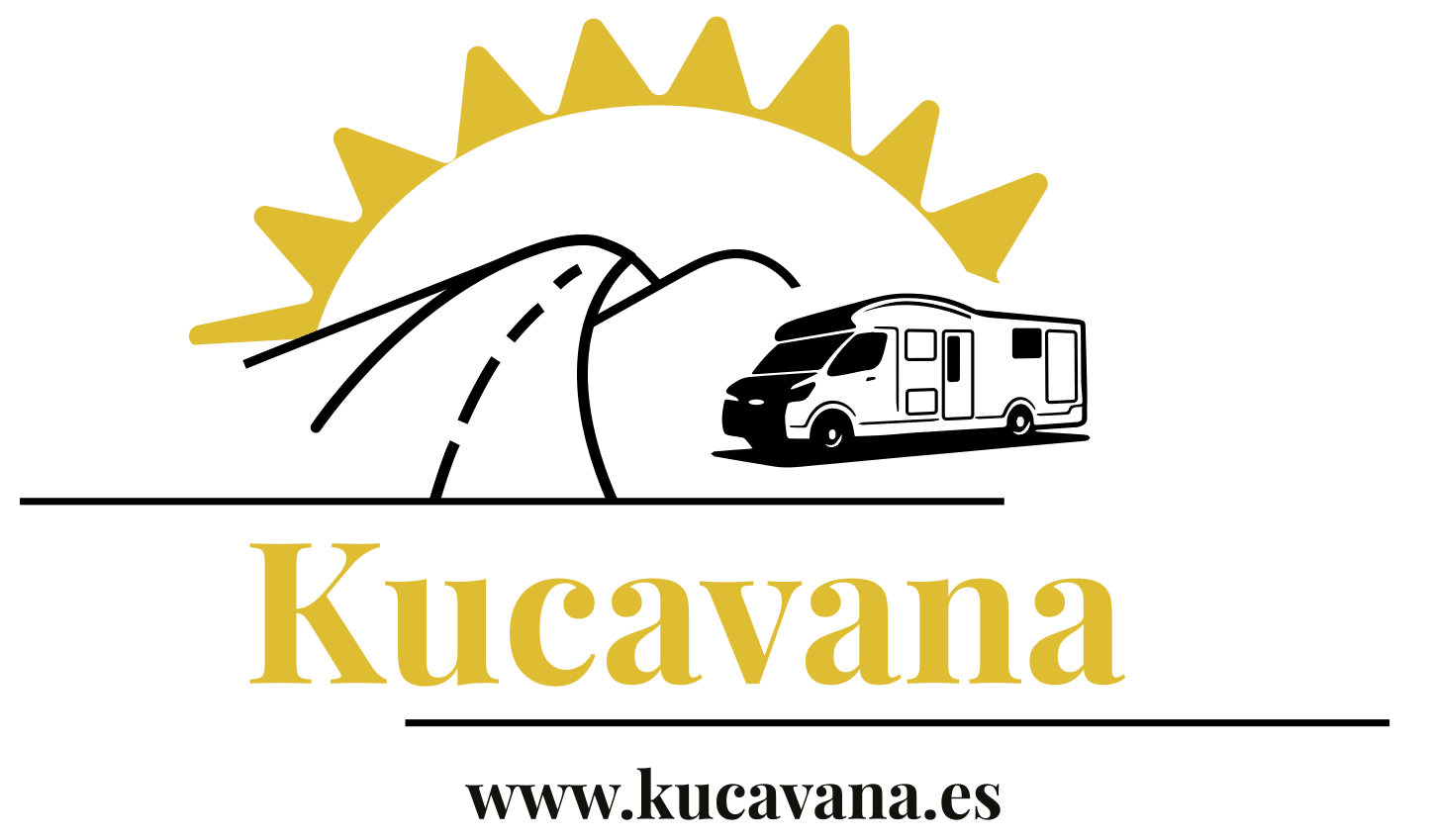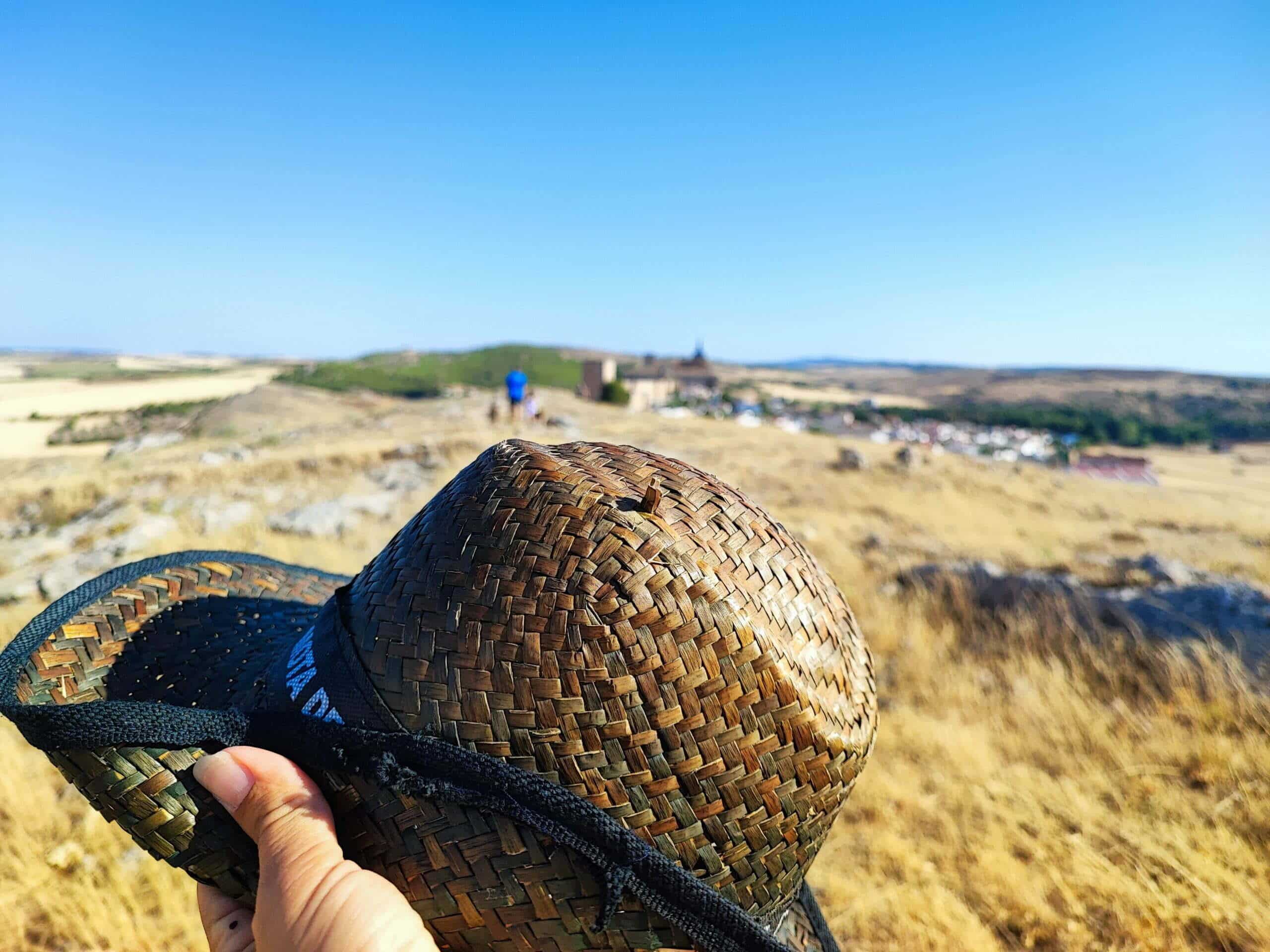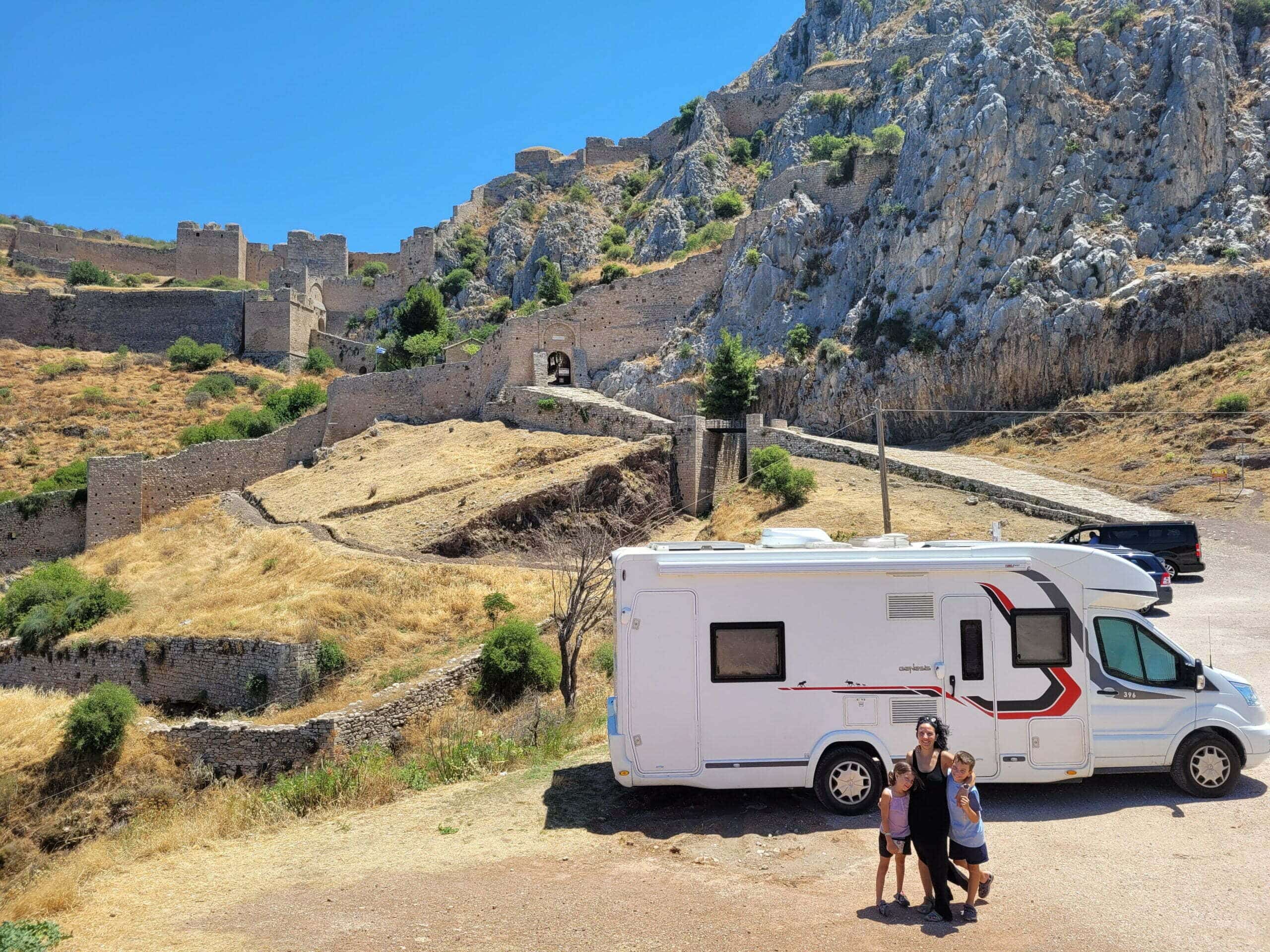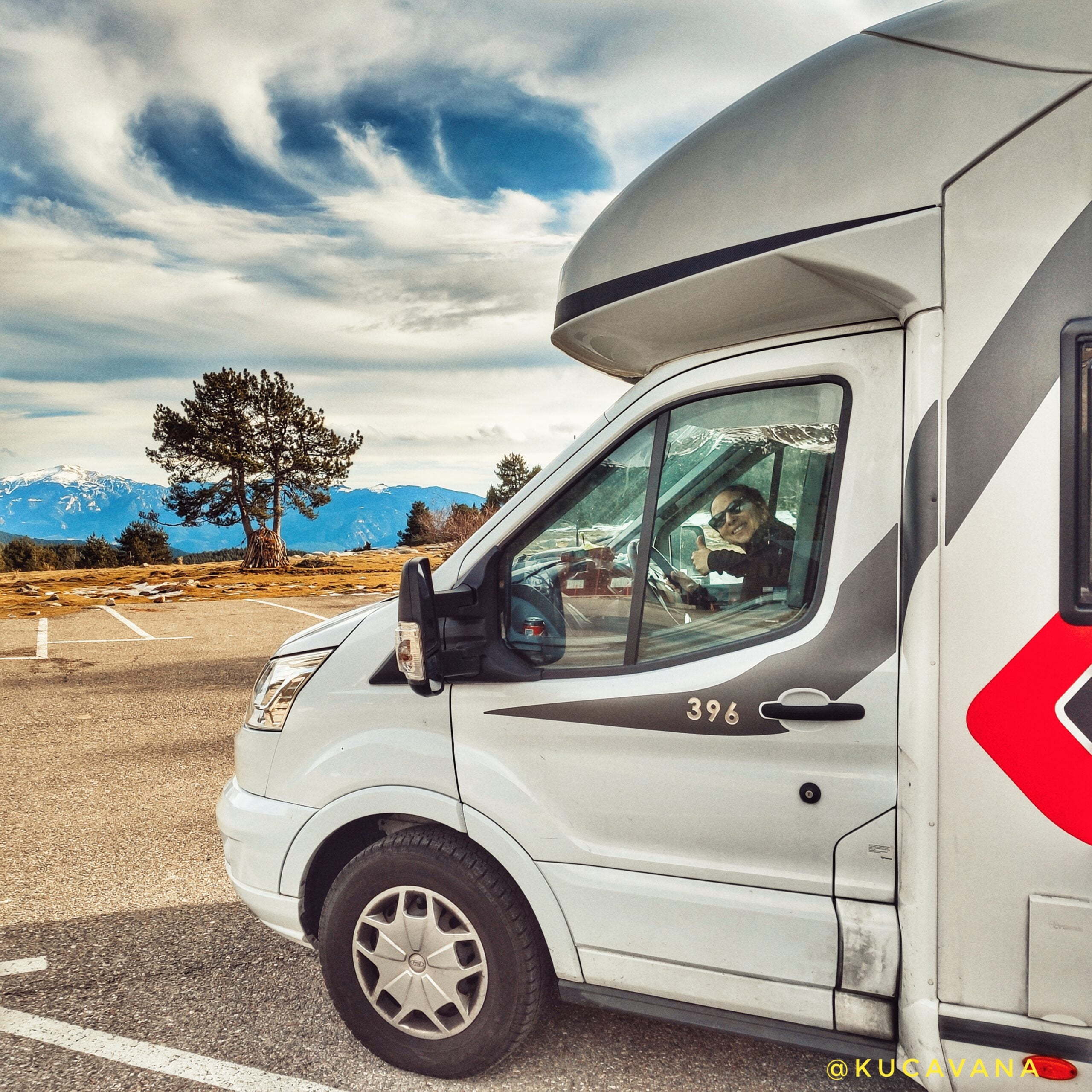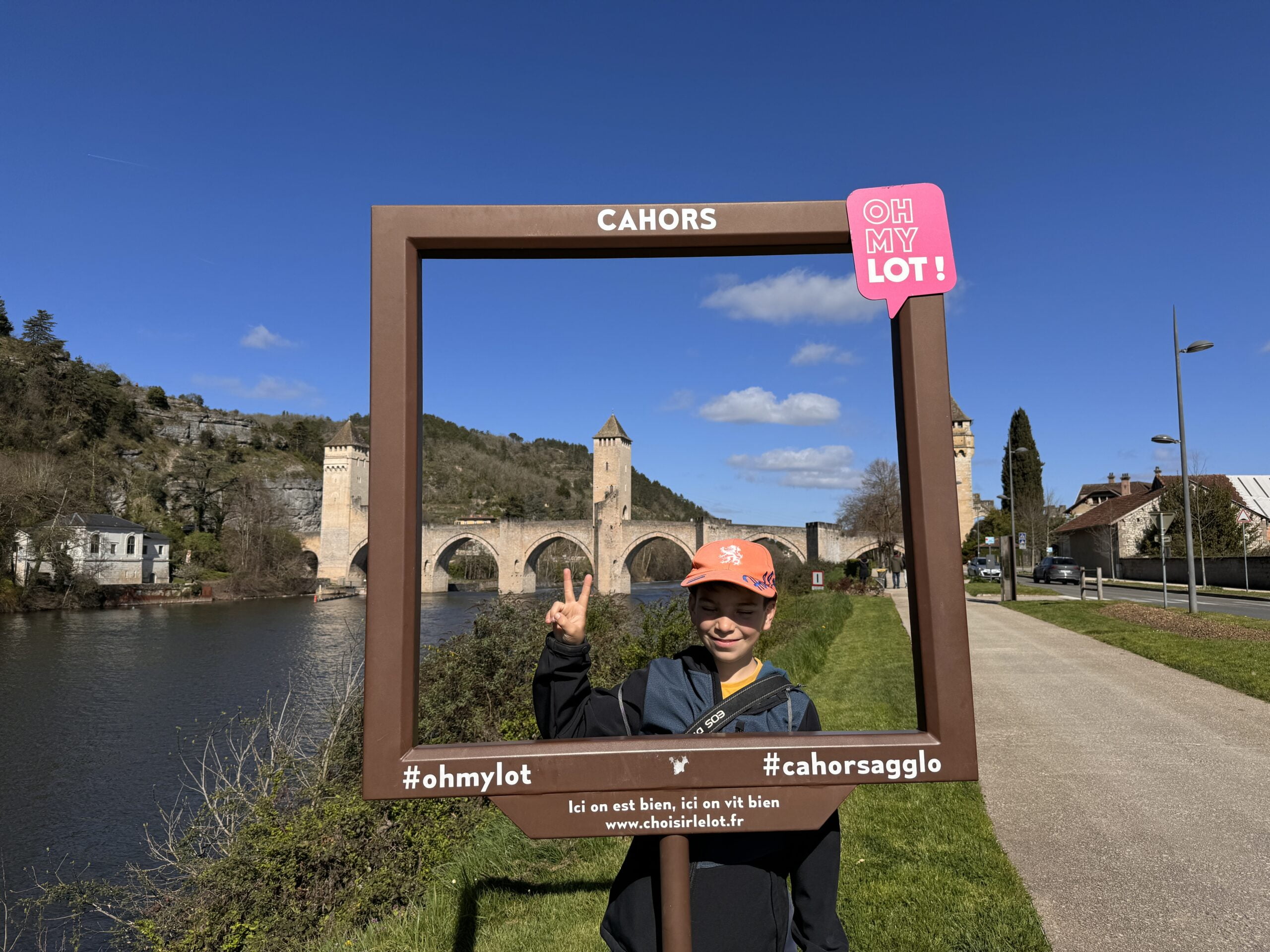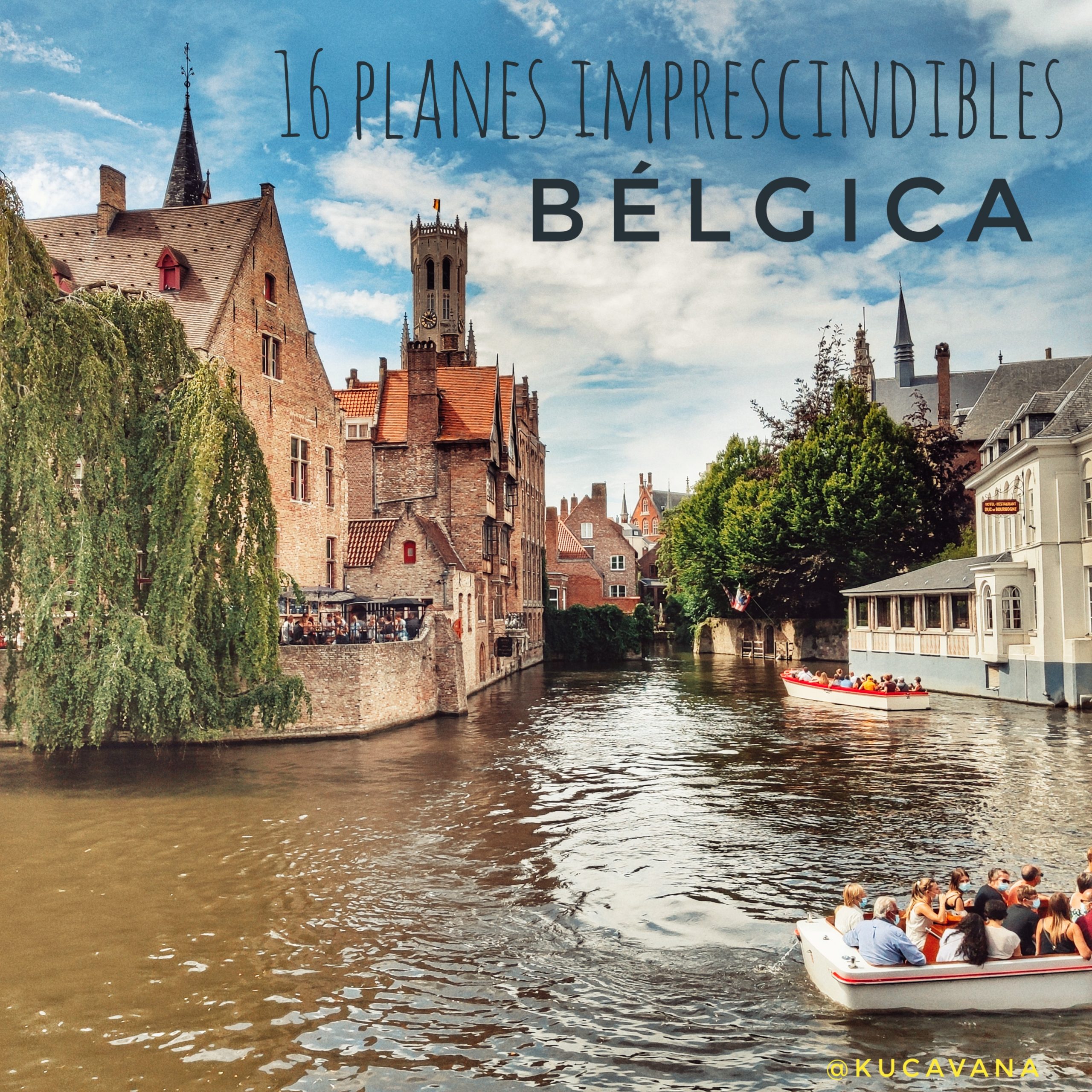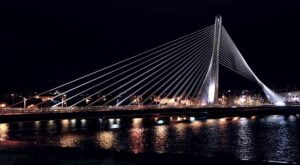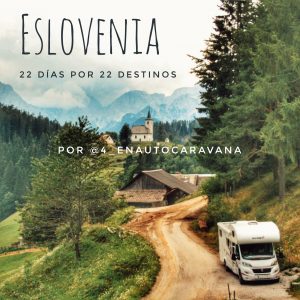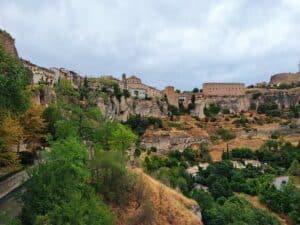Table of Contents
The province of Cuenca in a motorhome has long been the territory of Kucavana. For those who have been following us for a long time, surely you know that all our summer trips end in Cuenca or, more precisely, in one of its beautiful micro-towns, Úcles.
In Uclés, our family has part of its heart and here, all our trips always end, whether they start in Albacete, in Poland or wherever.
For this reason, today, we want to explain to you in this post the best of Cuenca by motorhome. A journey through different thematic routes where both adults and children will enjoy quixotic places, prehistory, Roman history and medieval towns. A trip where you will savor the best of Castilian gastronomy.
Stay and read on to discover the best of the province of Cuenca by motorhome.
Follow us on networks!
If you like what we share here, follow us live on our channels Instagram y Youtube, we will be even closer to you.
Cuenca capital in a motorhome: medieval town, culture and much more
In Cuenca, you will be able to discover a city that uphill and downhill can be discovered very well on foot and of which there is no corner without waste.
Something that we highly recommend is to do a free tour or guided tour of Cuenca, that there are even some nocturnal visits that are well worth doing to get to know the city in one day. Also something useful, especially with children, is to take the tourist train of the city, which with the slopes helps to better support the visit to the city.
From Cuenca do not miss the part falls from the Júcar river gorge, its historic helmet, Museum of Paleontology of Castilla y la Mancha (the MUPA), where a good sample of the paleontological heritage of this autonomous community of Spain is preserved. And finally, you can't miss the Science Museum of Castile and La Mancha, which is located in the same old town and is located in an old convent.
You can see more about what to see and where to spend the night in Cuenca in a motorhome here
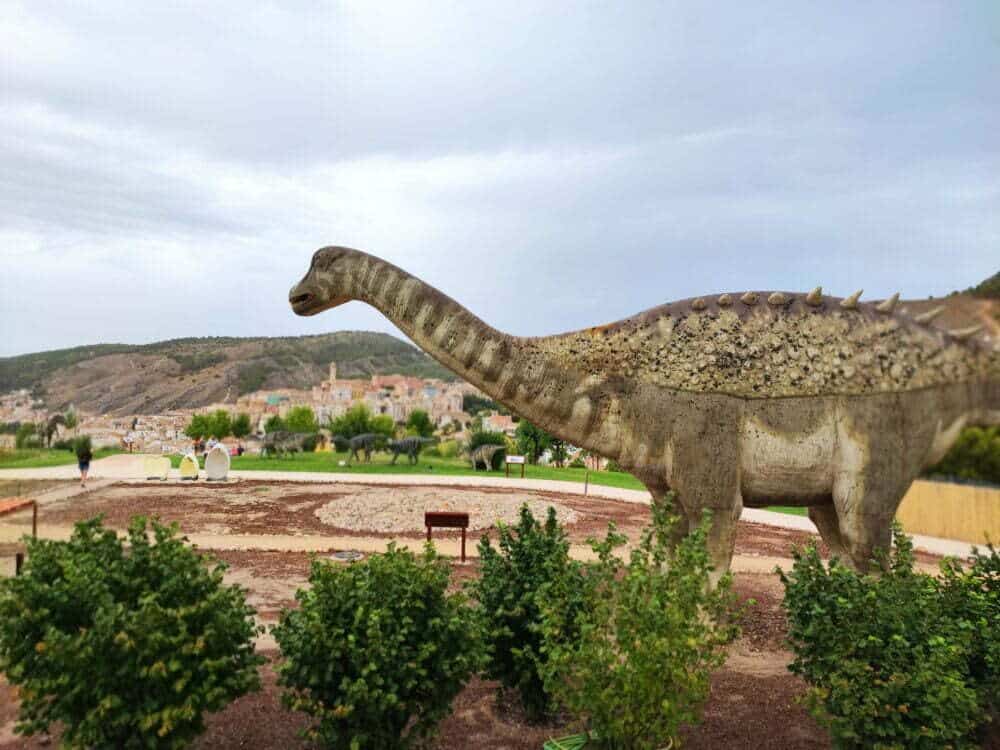
Belmonte, its castle and the Trebuchet park
Belmonte Castle is a fortress located on the San Cristóbal hill, on the outskirts of the town of Belmonte (Cuenca). Its construction began in 1456 by order of the Marquis of Villena, Juan Pacheco, and was not completed until 1468. Belmonte Castle represented an important enclave in the War of Succession. After its splendor, it suffered several centuries of semi-abandonment until Eugenia de Montijo, as heir to the house of Villena, promoted some restoration works from 1857.
It has been declared a Historic-Artistic Monument and stands out for its good state of preservation, its special structure and its exterior, which is practically the same as when it was built. It is, therefore, one of the best preserved castles in Spain and has been the setting for films such as El Cid, by Antony Mann, and Juana la loca, by Vicente Aranda.
Through the following link http://castillodebelmonte.com , you can buy tickets and keep up to date with combat tournaments, archery and other activities that are organized there.
Trebuchet Park, in Belmonte Castle, is the largest full-scale siege engine park in the world. Along the route, you can discover 40 full-scale siege engines that were perfectly operational as they were at that time.
To park in Belmonte in a motorhome you can do it in the same parking lot of the castle. Now to sleep, being quite inclined, you may prefer another place.
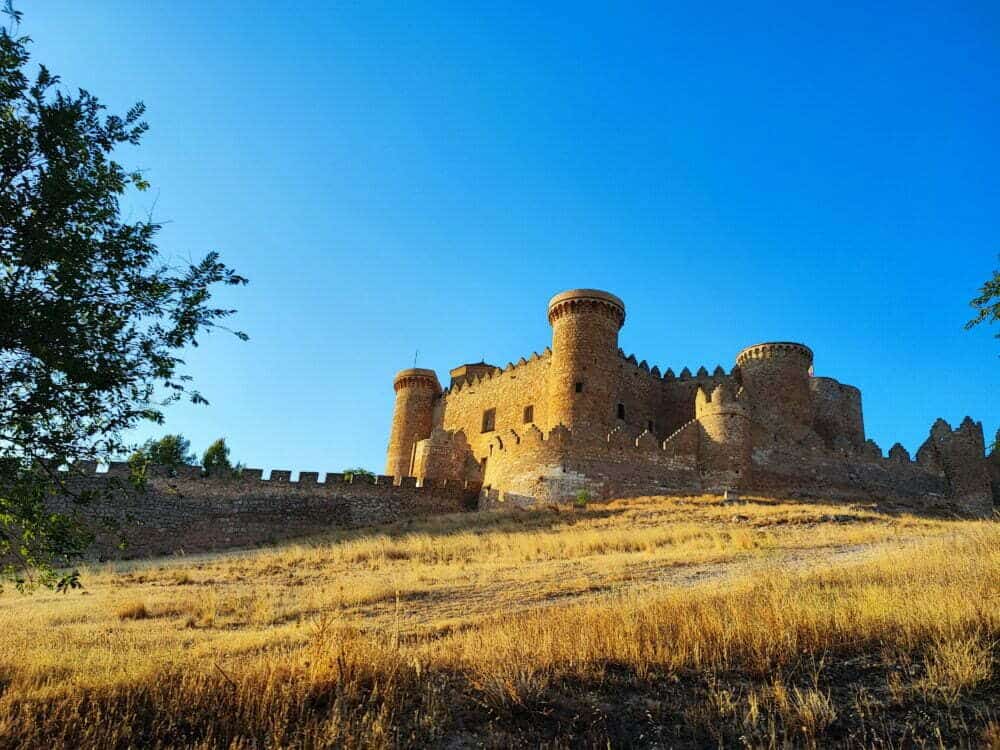
Don Quixote's windmills in Mota del Cuervo
And since you are in the land of La Mancha, you cannot miss a visit to the 7 windmills in the town of Mota del Cuervo, where the character Don Quixote de la Mancha by Miguel de Cervantes walked and, also, where the author himself resided for a time. Of the 7 mills (each one identified by a name), 3 can be visited and only one, called The left handed (because its blades turn the other way around) is original. Various studies show that, in his time, there could have been a total of 23 windmills.
In the following link you can check the schedules and access to plan your visit: http://www.turismocastillalamancha.es/patrimonio/molinos–mota-del-cuervo-23164/descripcion/
To park the motorhome you can do it right in front of the mills, in its parking lot. That is why it is perhaps not the best place to spend the night because it depends on the day there are large bottles of young people from the town in the picnic area.
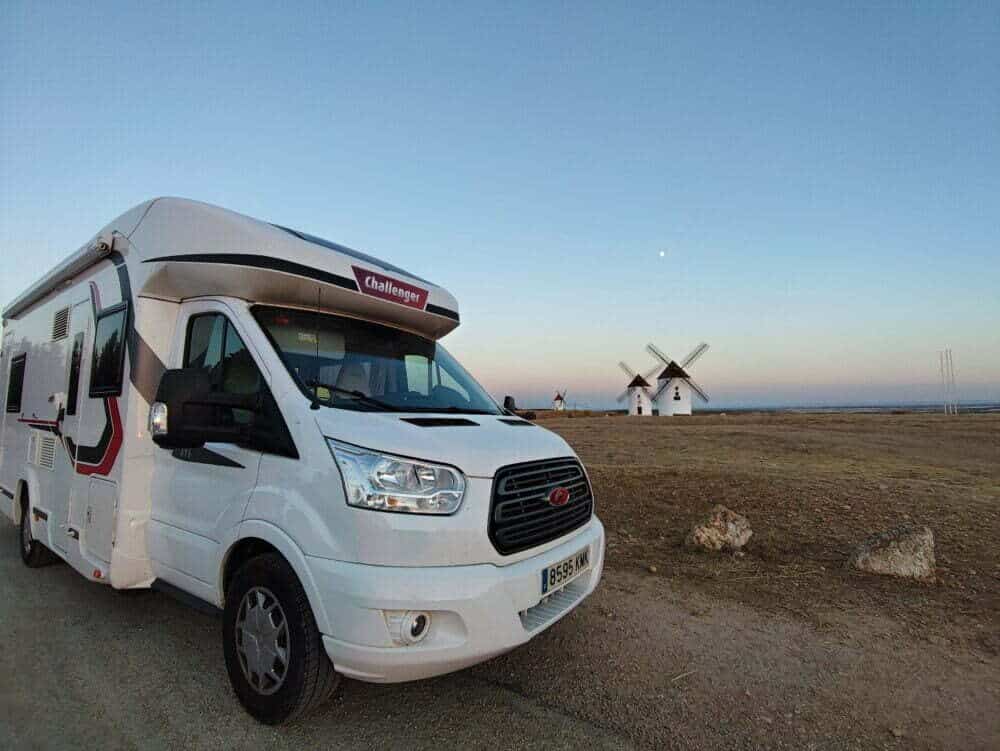
Uclés, medieval town at the foot of its castle and the Monastery called the Little Escorial
Uclés smells of whitewashed houses, wheat and sunflowers. Its hills, with lavender and rosemary. Uclés breathes peace, harmony and serenity. Uclés tastes like the most traditional La Mancha, but with a touch of modernity, probably due to its proximity to Madrid. On the other hand, it tastes of simplicity, like its delicious japaipas, fried cakes made from flour and water. In Uclés everything is easy, life is breathed and absorbed through every pore. A place to stop and reset on a long journey.
In Uclés you cannot miss the visit to its Monastery, the so-called small Escorial de la Mancha, and visit the Wine Victim wine tavern, where you can taste a good Uclés Denomination of Origin wine, where Víctor and his wife will serve you with total sympathy. the best of this land in a family and quiet environment.
And if you like wine, do not miss this tour of wineries in the area that you can book here
Finally, if you have any strength left after the wine, we recommend you walk along the river, along the Senda de las Huertas, drink water at the fountain, in front of the beautiful medieval gate of Uclés, and go to the pond. A pleasant walk that many of its locals do every day in summer, when the sun goes down.
To sleep and do services for your motorhome, Uclés has a free motorhome area next to the municipal sports center, a very quiet area 5 minutes from the old town.
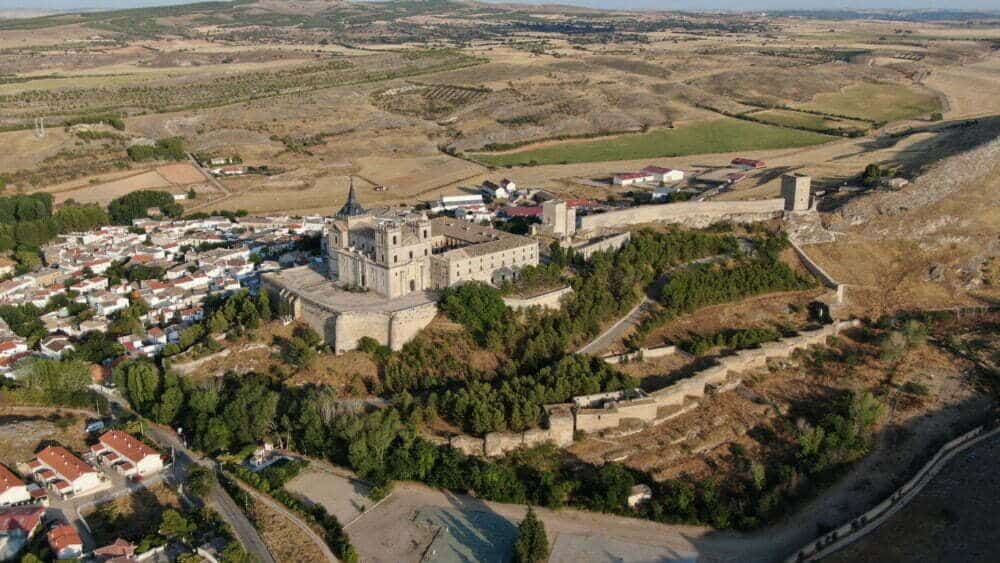
The Serranía de Cuenca in a motorhome
It is one of the mountains that make up the Iberian System and constitutes a succession of abrupt relief forms and intricate geological formations that cover thick forest masses of pine forests.
Walk on the Cuenca mountain range It is a wonderful experience in which we can see an important community of birds, as well as dream and enjoy the formations of incalculable geological value of tormagales, The alleys: the enchanted city, which look like cities sculpted by fairies and goblins.
The Serranía de Cuenca covers up to 11 municipalities. In the park there are three Interpretation Centers in the towns of Tragacete, Uña and Valdemeca, which are not permanently open to the public, so it is convenient to check their opening hours and times. Contact: 969.17.69.84 – 969.17.83
What to see in the Serranía de Cuenca in a motorhome
From the Serranía de Cuenca we recommend you to see different emblematic places such as: The Enchanted City, the Devil's Window in Vilalba, the crafts and ceramics of Priego, the Majadas and the Laguna de Uña.
the enchanted city
It is located in the town of Valdecabras (Cuenca), in the heart of the Serranía de Cuenca Natural Park and surrounded by immense pine forests. the enchanted city It is a geological formation that emerged from the seabed of Thetis and the result of the action of water, wind and ice over thousands of years, where today, adults and children enjoy letting their imagination run wild.
It can be visited with tour or on your own following a circular route in which pets are allowed and for which you have to pay an entrance fee.
The Devil's Window in Vilalba
It is a natural viewpoint in the form of a cave from where, with hundreds of meters of unevenness, the Júcar River can be seen making its way through a narrow gorge. It is an ideal enclave to enjoy the landscape and to practice adventure sports, such as canyoning or Via Ferrata of Devil's Window. It is a recommended stop on your visit to the Sierra de Cuenca and is located at the foot of the road that connects the town of Villalba de la Sierra with the Enchanted city.
According to the legend that gives rise to its name, from this place, the Devil held witchcraft sessions and pushed into the abyss everyone who looked out for him.
And if you like legends, don't miss the Devil's Window: https://www.lifecuenca.es/reportajes/leyenda-y-misterio/leyendas-del-ventano-del-diablo-3936
The Majadas
It is the municipality of Cuenca that receives this name because the first to settle there were shepherds who came to spend the night. Is in The Majadas that there is a second enchanted city, called The Alleys of the Majadas and that belongs to the Natural Park of the Serranía de Cuenca. The visit begins about 3 km from the urban center of Las Majadas and there are different routes depending on the duration and difficulty. The area is made up of Cretaceous limestone rocks, eroded by wind and water, which have achieved exceptional and large-scale shapes that remind us of passages, arches, bridges or monoliths.
You can easily visit Las Majadas and the source of the Cuervo River with this tour from Cuenca, and so you forget to drive the motorhome through the narrow roads of the Serranía de Cuenca.
Crafts and ceramics from Priego
Prigogo It is a municipality in the north of the province of Cuenca. Located between the Serranía and the Alcarría and, therefore, endowed with a rich and varied natural heritage.
Apart from its via ferrata, it is worth highlighting its pottery tradition, an art that has existed in the province of Cuenca since ancient times and which gave rise to an industry that, in the 1752th century, was registered in the Ensenada Cadastre (XNUMX). .
The old trades related to pottery and wicker still represent a sign of identity of the town of Priego, where you can visit a traditional pottery workshop. Its pottery is easily recognizable by the decoration with iron oxide of singular motifs and, almost always, unglazed.
The Laguna de Una
It is a lagoon located in the municipality of Uña (province of Cuenca). It is formed by the closure of a natural river dam (artificially raised) of the Rincón stream, a tributary of the Júcar river. The Laguna de Una It is part of the Serranía de Cuenca Natural Park and has an area of 15 hectares.
This is a place rich in fauna and flora, where you can enjoy the flight of waterfowl and birds of prey among many other representative species of the Serranía de Cuenca. The path that surrounds the Lagoon, with a route of approximately 3,5 km, is totally flat and runs practically along its banks, giving you landscapes of great inspiration and great photographic appeal.
La Roma in Cuenca: Segóbriga, Lapis Specularis mine and the town of Noheda
An easy way not to miss anything to see all these essentials of the Roman Basin is to do this excursion that departs from Cuenca city and that it is guided, which helps to understand the history of the Roman Basin apart from seeing almost all these places that we explain below easily and quickly.
Rome in Cuenca: Segóbriga
El Segóbriga Archaeological Park, located in the municipality of Saelices, about 4 km from Cuenca, is organized around the Roman city of the same name. The site is one of the most important archaeological sites from the Roman era in our country and its remains contain all the public buildings that are representative of Roman architecture. Segóbriga offers the opportunity to understand the urban characteristics of this period by not having any superimposed city.
Lapis Specularis Mine
In Cuenca, you can also discover and delve into the mining activity developed in Roman times for the exploitation of Lapis Specularis, a type of selenitic gypsum that, due to its transparency, was used as glass. The Cuenca mines were, in Roman times, the most important in the empire.
Currently, you can visit the mines of The Enchanted Blackberry in Torrejoncillo del Rey, the condemned y The Glassy in Osa de la Vega and The Caves of Sanabrio in Saceda del Río in Huete.
Noheda's Village
It's a archaeological site located next to the town of Noheda in Cuenca. The town was discovered by chance in 1984 during the farming work carried out by the Lledó family, owner of the land, when a piece of mosaic was uncovered. The remains belong to a Roman villa and stand out for containing the most spectacular figurative mosaic of the entire empire.
To visit this site you must take into account that only guided tours are carried out and with prior reservation:
Lever Torcas and Dead Earth
It is a natural monument, located in the center of the province of Cuenca, made up of hundred-year-old pine and juniper trees and one of the most important geological complexes in Spain, with more than twenty sinkholes and sinkholes. Torcas are depressions in the land caused by the collapse of cave ceilings and which turn the complex into a huge rainwater strainer. While the water filters into the aquifers emerging elsewhere, the landscape of the torcas dries up and, hence, it receives the name of Dead land.
Within the same area, the paleontological site of The Holes, of great scientific value and that we have already named previously.
The enclosure is free to access and has two interpretive trails. Access is not the widest in the world and by motorhome you may not like it very much, that's why you can also do the excursion from Cuenca on this tour that they make that you can book here
Latest posts from our blog
-
Definitive manual for traveling by motorhome【2024】
Super complete manual for traveling by motorhome with all the answers to your questions.
-
Driving, parking, spending the night or camping a motorhome in Spain: guide to regulations, technology and more
We explain where you can drive, where you can sleep, camp and park your motorhome or camper van
-
What to see in Cahors, UNESCO World Heritage
What to see in Cahors: our experience and visit for the best of Cahors to see.
-
⭐ Belgium by motorhome or camper: Route with 16 essential destinations ⭐
Belgium by motorhome with 16 unique destinations and places. Bruges, Ghent, Brussels and much more that you do not know and will surprise you from Belgium
Ethical code:
On our blog you will find affiliate links. These are always placed with our highest ethics. We never publish any service or product that we have not used before and that we are sincerely happy with. That is why our recommendations are always ethical. In addition, there is no additional cost for you to book through our links and, on the other hand, it means a small commission for us that helps us maintain this blog so that you can continue enjoying it for free.
